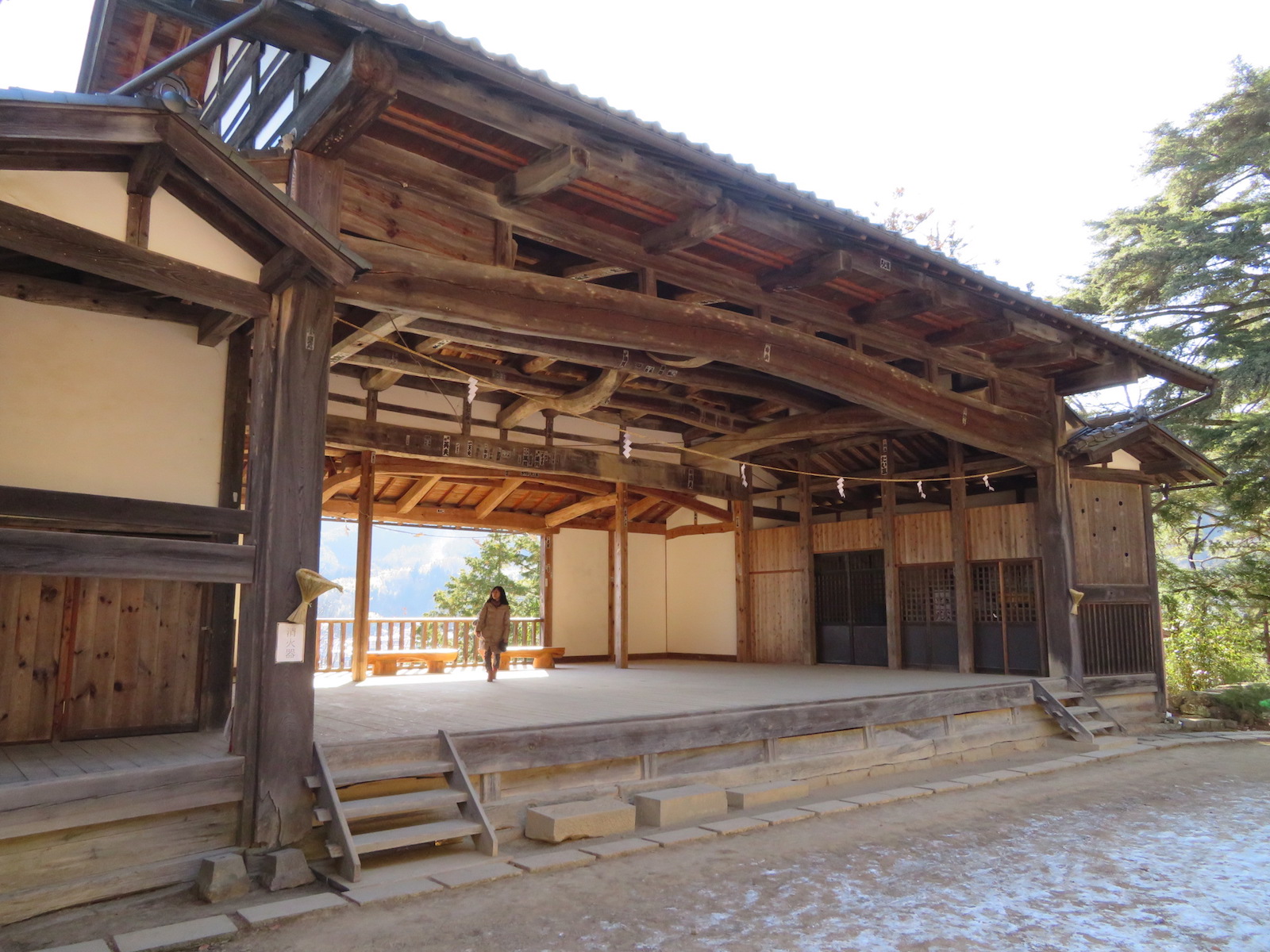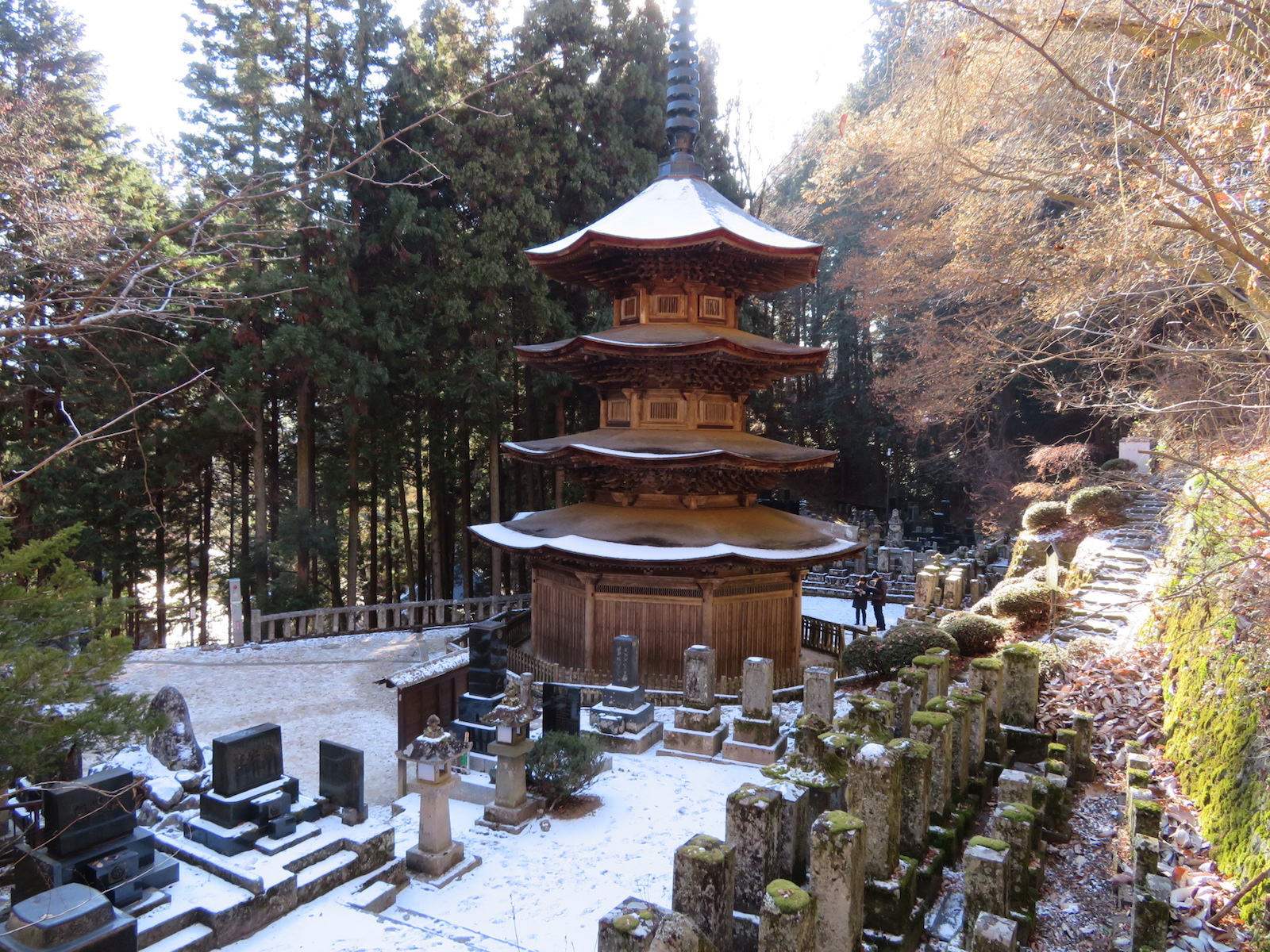A friend who recently visited Japan declared: “Anyone who visits Japan should be sure to spend at least one night in a ryokan. What an experience!” I wholeheartedly agree. Without a doubt, Japanese omotenashi hospitality is at its best in the ryokan environment. But I would go a step further and say that for the full experience the ryokan should be in an onsen (hot springs) town.
Bessho Onsen, said to be the oldest known onsen town in Nagano Prefecture, makes for an easy weekend getaway from Tokyo, or a stopover from Tokyo to other sightseeing destinations to the north. Unlike many onsen towns, it’s easily accessed by train. There are excellent relaxation opportunities in its traditional ryokan, as well as public hot springs baths and foot baths. At the same time, it offers fascinating and unique historical sights as well as fun nature walks. What more could one ask for?
Bessho Onsen was a significant spa resort as far back as the Kamakura Period (12th-14th century), when it was also a center of local government, with associated religious and educational facilities. Some of that history can still be found.
Bessho Onsen is a little over two hours by train from Tokyo. Start with the Hokuriku shinkansen, which takes about an hour and a half to Ueda. At Ueda change to the Ueda Dentetsu Bessho Line, which takes about 30 minutes to reach its terminus, Bessho Onsen. This line was originally opened in 1921 specifically to open up several of Nagano’s onsen towns to visitors. The station still has a bit of that “Taisho Era” feel to it, and there is even a vintage train car on display.
Like many onsen towns, Bessho Onsen straddles a small river, the Koshimaki, in a narrow valley. Bessho Kaido, the main road leading into the town, runs past the train station and forks just above it. The right fork, Prefectural Road 82, leads to the central part of town, just a couple hundred meters along. As it proceeds upstream, PR 82 runs along the left bank of the river, with several ryokan and souvenir shops on either side of the waterway and up some of the side roads as well.
There are many joys to experience when staying at a ryokan. Guests are often greeted with a cup of tea in the lobby so they can relax and unwind after their journey. Alternatively, tea and a sweet await guests in their room, where one of the hotel staff provides an overview of the ryokan’s facilities and makes meal arrangements (there is often a window of time slots for each meal, allowing guests some flexibility with their schedule). Staff are often willing to provide local information, sightseeing tips and hiking advice as well.


Another of the joys of a ryokan is the meals: usually a kaiseki-style evening meal in the privacy of your room and large, hearty breakfast in a central dining room. No need to even think about what or where to eat. Everything is laid on for you!
Nagano Prefecture, with its two broad valleys, produces a wide variety of foodstuffs. Uematsu-ya, a popular Bessho Onsen ryokan of Showa vintage, rightfully prides itself on featuring this local produce in its meals, a popular trend with ryokan across the country. At Uematsu-ya, everything from the rice, vegetables, fish, meat and tofu to the soy sauce, pickles and even sparkling sake, were locally sourced for the sumptuous evening meal they served. Uematsu-ya are also accommodating of dietary restrictions if given advance notice—all part of modern omotenashi.
Many ryokan guests like to have a bath shortly after arrival and then spend their stay wrapped in the cotton yukata provided, even strolling the town so attired. In a place like Bessho Onsen, each ryokan’s baths are, of course, filled with local hot spring mineral water and many include both indoor and outdoor options.
While bathers are segregated by gender, at an onsen the bathing is otherwise communal. One undresses in an ante-room and moves into the bathing area with a little white onsen towel discreetly positioned for modesty. Washing is done first at little washing stations equipped with spigots, soap, shampoos and a small tub. Only once the washing is complete does one soak in the large communal pools (indoors and outdoors). The mineral water of Bessho Onsen has a slight whiff of sulfur, but not overpowering as in some hot springs. It leaves the skin feeling soft and smooth.
Some ryokan provide guests with vouchers for free entry to one of Bessho Onsen’s three day baths, to enhance the onsen experience while enjoying the sights of the town. In addition to the day baths, with the full-on hot springs bath experience, the town hosts a couple of foot baths, open air baths where one can soak the feet after walking the town or enjoying one of the walking trails in the hills nearby.
The town is fairly compact, which makes exploring on foot easy. Most of the town’s major historical sights are just a 5 to 10 minute walk from each other, with lots of cafes, sweets shops and restaurants dotted around. Keep your eyes open for various little roadside shrines and statues, as well. Many of these are centuries old. How have they survived?

One of the oldest temples in the area is Kitamuki Kannon, which sits above the river at the end of the narrow lane lined with tea houses and souvenir shops. The temple dates to the beginning of the Heian Period (825, to be exact), a time when Kannon, the Buddhist goddess of mercy, was particularly popular in Japan. After the original temple was destroyed during the Gempei wars of the 12th century, the temple was re-built in 1252 with its unusual northern orientation (hence its name of kitamuki or north-facing). It is said the temple was built this way so that it faces Zenkoji in Nagano, home to one of Japan’s most important and venerable Buddha images.
The opposite side of the valley from Kitamuki Kannon features several other distinctive and historical temples and shrines.

Jorakuji, formerly a small monastery, is regarded as the parent temple of Kitamuki Kannon. While the temple is renowned for its distinctive thatched roof, equally interesting is the treasure ship-shaped 350 year old pine tree in its front garden.
Behind the tree is the Jorakuji Art Museum, housing various artifacts, including statues and figurines, an intricately inlaid biwa (Japanese lute), and ema painted by the renowned late Edo-period artist Hokusai. Hours: 9 a.m. to 5 p.m.(4 p.m. in winter); admission 500 yen.
Take a bit of time to stroll into the woods behind Jorakuji to check out its stone monuments surrounded by tall, straight cypress and cedar trees. The largest of the stone pagodas is nearly three meters tall and is a nationally-designated important cultural asset.

Next to Jorakuji is the approach to Bessho Shrine. While the paved approach gets quite steep, it is worth the climb to see the shrine’s Noh stage, with its unique backdrop. Rather than the traditional painting of a gnarled pine, this stage is open at the back, giving the audience a dramatic view to the valley beyond. The distinctive shape of the stage makes it easy to spot from the town in the valley below, too, once you know what to look for.

Nestled in further up the valley is Anrakuji, a Zen temple that was a major site of Buddhist learning in the Kamakura Period. Anrakuji is home to many historical and artistic treasures, most notably Japan’s only remaining eight-sided three story pagoda, a designated national treasure. The front grounds of the temple are free to enter and one can even step inside the temple itself. There is a fee to enter the back of the temple grounds to see the pagoda and rinzo (revolving sutra shelves). Hours: 8 a.m. to 5 p.m. (4 p.m. in winter); admission 300 yen).
The intricacy of the pagoda, situated at the center of a small graveyard in a particularly narrow bit of the valley, must be seen to be fully appreciated. It is a most graceful and awe-inspiring work of art.
Bessho Onsen has just enough to see and do in a relaxing week-end, making it a perfect get-away for those living and working in Tokyo, but also a taste of Japanese culture for overseas visitors who need a vacation from their otherwise over-busy sightseeing in other parts of the country where the modern has overtaken the traditional. Check it out!
Vicki L Beyer, a regular Japan Today contributor, is a freelance travel writer who also blogs about experiencing Japan. Follow her blog at jigsaw-japan.com.
© Japan Today Take our user survey and make your voice heard.
Take our user survey and make your voice heard.















No Comment
Login to comment